
- •NEWS IN BRIEF
- •TEXTS FOR READING
- •The Russian Avant-Garde Animated
- •METHODS OF TEACHING
- •A Continuous Teacher
- •PROFESSIONAL DEVELOPMENT
- •FOCUS ON LANGUAGE
- •Падеж существительных
- •Time Is Running Out!
- •Where Cognitive and Corpus Linguistics Meet
- •FOR YOUNG LEARNERS
- •The Time to Rhyme
- •SCHOOL THEATRE
- •How the Grinch Stole Christmas
- •Five-Minute Tests
- •LESSON PLANS
- •Interview with Paul De Quincey
- •Exhibitions
- •Music
- •YOUTH ENGLISH SECTION
- •GOOD NEWS
- •INFORMATION
- •2014 in Review
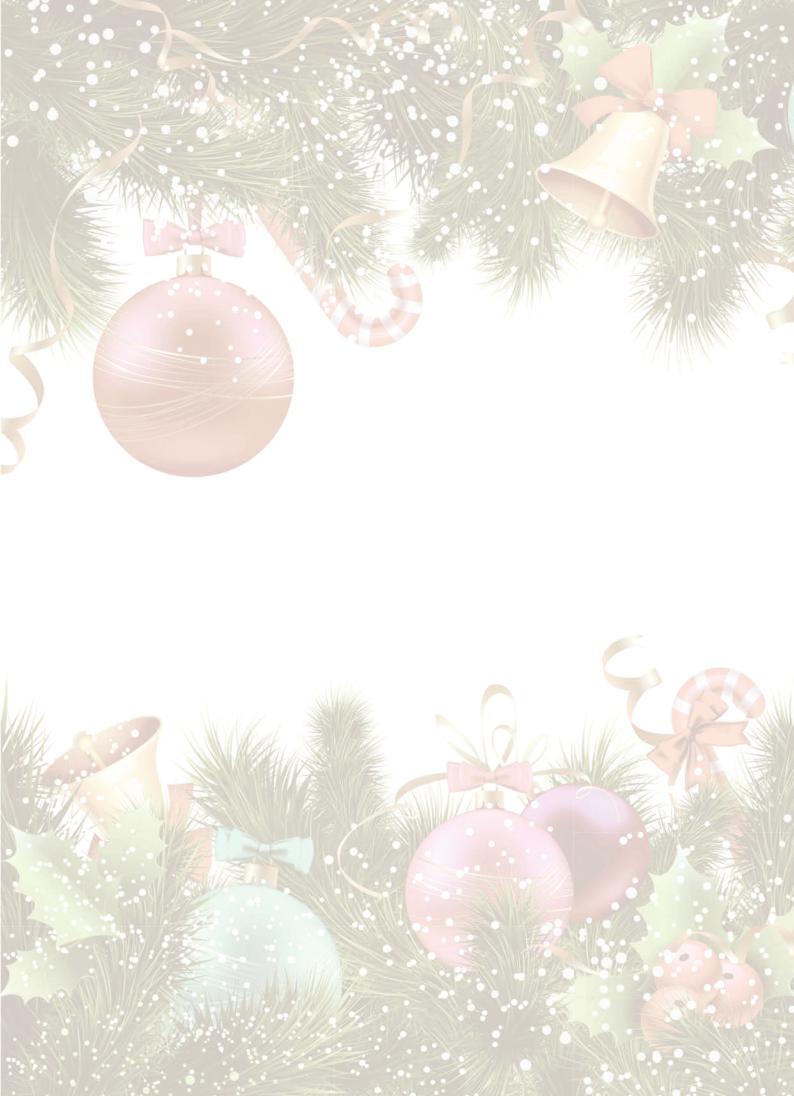
|
LESSON PLANS |
|
English |
NEW YEAR’S DAY |
|
|
25 |
Урок-праздник для 5–6-х классов |
December 2014 |
||
Учитель иностранного языка в современной школе должен уметь заинтересовать и увлечь своим предметом учеников. Новые задачи, которые стоят перед учителем сегодня, заставляют его пересмотреть некоторые вопросы организации урока ИЯ, его содержания, форм, методов и приемов обучения. Необходимо по-новому проектировать учебно-воспитательный процесс. Предметом внимания и творческого поиска становятся в первую очередь коммуникативная направленность урока, современный учитель-методист должен усилить его воспитательнообразовательныйиразвивающийпотенциал. Обязательное условие эффективного обучения ИЯ – знание личности каждого школьника и учет его индивидуальных способностей в учебном процессе. Успеху в работе в немалой степени способствуют умение учителя видеть каждую учебную тему в целом, динамику ее развития, знание объема лексики и структур, которыми учащиеся должны овладеть за определенный период времени, умение организовать учебный материал, обеспечить его непрерывное повторение в новых ситуациях и способствовать формированию прочных речевых навыков и умений.
Планируя свои уроки, автор статьи старается ориентироваться на задачи и содержание, которые определены для каждогозанятиявкнигедляучителя, новпроцессеихреализации учитывается в первую очередь уровень обученности и развития школьников. В своей работе мы стараемся усилить коммуникативную направленность урока ИЯ, поэтому традиционными стали уроки-конференции, урокипутешествия, уроки-праздники, викторины и т.д. Мы стремимся к тому, чтобы структура урока ИЯ подчинялась логике общения, а различные лексико-грамматические упражнения и задания активизировали коммуникативнопознавательную деятельность школьников. Для этого мы стараемся придать заданиям речевой характер и, тем самым, соединить все этапы урока коммуникативными связями, а также сделать из урока настоящий праздник, особенно в канун таких замечательных праздников, как Новый год и Рождество.
Приведем фрагмент урока-праздника английского языка New Year’s Day, разработанного и апробированного ав-
тором статьи.
Урок английского языка начинается с фронтальной беседы со школьниками о праздновании Нового года в их школе и семье, о новогодних утренниках, которые посетили ученики во время зимних школьных каникул. При чтении тематических текстов (они могут быть в школьном учебнике или тетради по домашнему чтению, или же учитель ИЯ подбирает их сам) активизируется изученная лексика по этой теме и учащиеся знакомятся также с новой
лексикой.
Лексика по теме: to decorate, a fir-tree, to give presents, each other, to like best, toys, lights, a TV concert, wonderful, a set of water-colours, New Year party in the Kremlin, to enjoy, a bag full of presents, Santa Claus, an English tradition, Happy New Year, etc.
Фронтальный опрос на английском языке лучше всего сопровождать рассказами о себе, о своих планах и впечат-
лениях, что способствует естественному обмену мнениями: устанавливается живой диалог между учителем и его учениками.
Впроцессе устной беседы ученики незаметно для себя повторяют тему “Winter Is a Nice Season!” и “Winter Holidays Are Great Fun!”, “We Had a Jolly Good Time During Our Winter Holidays!”, используя в речи следующие слова: to toboggan, to skate, hills, to begin, during, to ski, down/up the hill, to race, skating-rink, white with snow, to have a (jolly) good time.
Вречевой зарядке учащиеся также повторяют слова: school hall, to look after, to help about the house, to dust, to sweep, to spend a lot of time outdoors, многие слова учащие-
ся встречали ранее, но теперь эта лексика активно усваивается на этом уроке.
Основноевниманиеуделяетсяиспользованиювопроси-
тельной формы Past Indefinite в структуре: Did you often...
during your winter holidays?
На уроке учащиеся продолжают тренироваться использовать в устной речи ранее изученные лексические едини-
цы, а также глагол to spend, когда учитель в своей беседе с учащимися задаёт им вопрос “How did you spend your winter holidays last year?”. На этом этапе можно повто-
рить структуру So/Neither did I с помощью игры “А – Yes Game!”.
Учитель произносит пример по-английски и учащиеся отвечают.
T:Listen to the following examples and try to understand what I do in order to say “и я тоже” in English.
I like winter.
P: So do I. T: I can skate. P: So can I.
T: I skated yesterday. P: So did I.
T: I don’t like to get up early in winter. P: Neither do I.
После повторения данной структуры учитель предла-
гает согласиться с его утверждениями, используя в речи конструкции типа So/Neither did (had, have, can, etc.) I.
Далееучительпредлагаетразучитьдиалог, гдесодержится эта структура. Диалог написан на доске или экране.
A:Did you have a good time during your winter holidays?
B:Yes, I did. And what about you?
A: I did, too. I went to a winter camp where we celebrated New Year. And where did you spend your winter holidays?
A: I stayed in town with my parents.
Учитель прочитывает диалог несколько раз, затем ученики отрабатывают каждую реплику, после школьники
составляют аналогичные диалоги сами:
A: What did you do during your winter holidays?
A: On the 30th of December we had a New Year party at school. Then I stayed at my grandmother’s.
A: Does your grandmother live in the country? A: Yes, she does.
A: Did you often go skiing?
A: Unfortunately, I didn’t. The weather was too warm.
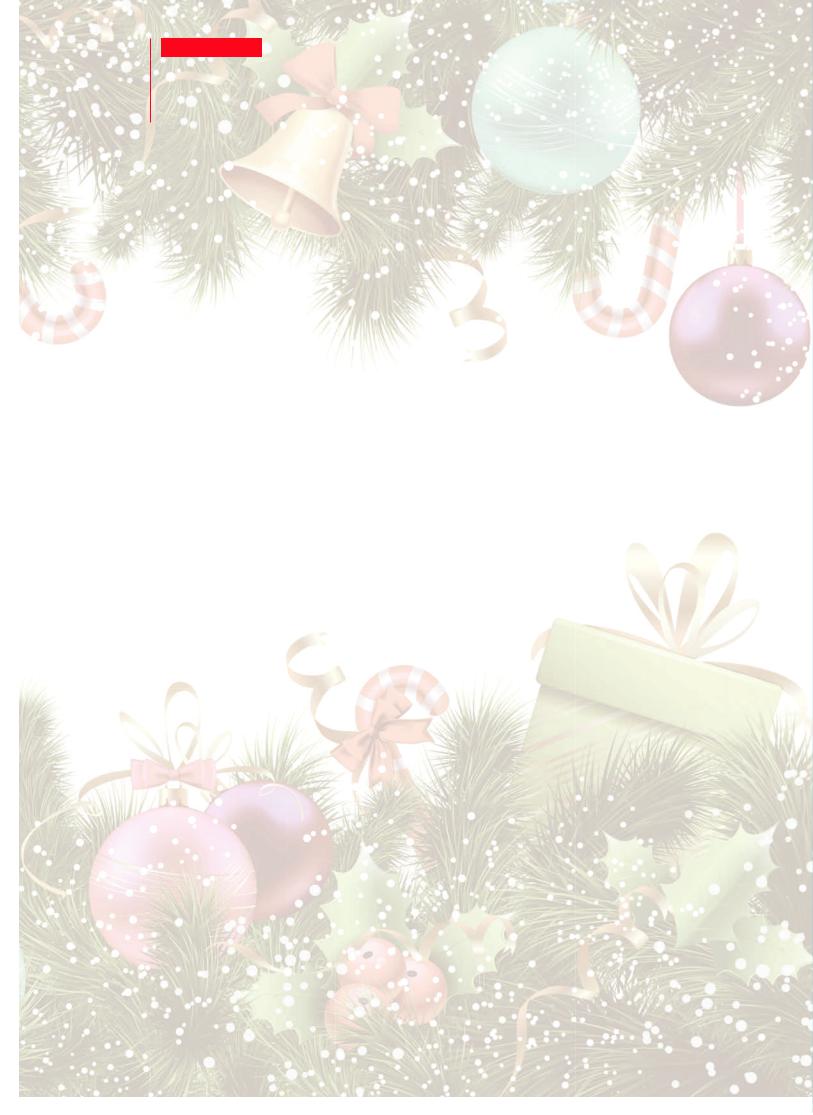
English LESSON PLANS
26
December 2014
Большая часть времени на уроках английского языка в канун новогодних праздников уделяется подготовке и
проведению различных ролевых игр, например, таких как
“Father Frost Has Come!” и “How Old Is My Granny?”.
Подготовительная работа состоит из нескольких этапов: I. Учащиеся обучаются составлять диалоги по образцу
(учитель ИЯ дает образец диалога на доске).
Mother: Kate, what present do you want Father Frost to bring you on New Year’s Day/Night?
Kate: Oh, Mum! I’d like Father Frost to bring me a set of watercolours!
II. Учащиеся активно обучаются применять в речи различные разговорные формулы, которые могут быть использованы для поздравления с Новым годом и рождеством, а также для выражения благодарности.
Приведем схему работы, которая проходит в следующем режиме Т–Ps, далее Т–Р1, Р1–Р2, Р2–Р3 и т.д.
Т: (I wish you a) Happy New Year, friends! Ps: The same to you!
Далее учитель проводит с учащимся языковую игру:
Т: Let’s play a little. Imagine that I’m Father Frost and I’m going to give you some nice presents. What presents do you want me to give you?
P:I want you to give me a beautiful doll (an interesting book, a cell phone, a laptop, a nice dress, a bag, etc.).
Учительразыгрываетситуацию: потребуетсяобъемный
мешок, в который он кладет различные предметы с парт учащихся, а также подготовленные заранее распечатанные или нарисованные учениками картинки, на которых изо-
бражены ожидаемые “подарки” и сюрпризы.
Т: What do children usually ask Father Frost when he comes to them with a big red bag?
P1: “What have you brought in your bag?”
Т: And what do children usually say when they get their presents?
P2: “Thank you, Father Frost!” P3: “Thank you very much”.
P4: “Thank you for your nice presents!” P5: “What nice books!”
P6: “What a fine pencil-box!” P7: “What a lovely doll!”
P8: “What a wonderful toy!” Etc.
Учитель раздает поочереди желаемые предметы или картинки, на которых изображены воображаемые подарки. Получив “подарки”, школьники благодарят учителя.
Далее проходит диалог учителя в роли Деда Мороза с
учащимися:
Т (входит в класс): Good morning, my little friends! Ps: Good morning, Father Frost!
T: I wish you a Happy New Year!
Ps: The same to you! Father Frost, what have you brought in your bag?
T: I’ve brought some nice presents for you! Ps: Thank you very much, Father Frost!
T:I remember you wanted me to give you an interesting book, didn’t you?
P1: Yes, I did.
T: Here you are!
P1: What a wonderful book! Thank you very much, Father Frost!
Можно также предложить кому-то из школьников сыграть роль Деда Мороза – тогда он дарит подарки всем остальным в классе. Разыграть роль Деда Мороза могут несколько учеников поочередно.
Подготовительная работа окончена, теперь учитель может проводить саму ролевую игру. На доске или экра-
не написаны ее название, а также план и имена персо-
нажей: “Father Frost Has Come!” and “How Old Is My
Granny?”
1.“Granny, tell us something interesting!”
2.Father Frost knocks at the door and gives presents to the children.
3.Granny’s curious story.
Characters: Granny; Snowmaiden; Father Frost; Grandchildren
Cлова, которые могут вызвать затруднения, и их пере-
водпишутсяна доске: to solve the problem, Russian, Europe, Peter the Great, to put an end to...
Далее ученикам необходимо подробно объяснить условия языковой игры, раздать таблички с именами персонажей школьникам, которые желают принять участие в этой игре. Учитель здесь играет роль бабушки. Бабушка и внуки садятся за столом у доски, где стоит маленькая наряженная искусственная елка. Бабушка вышивает, внуки
играют с игрушками или рисуют.
Grandchildren: Granny, tell us something interesting! (В
этот момент раздается стук в дверь.)
Granny: Jack, go and open the door, please. But remember to ask who is there.
Т:Who’s there?
Father Frost: Father Frost has come! (Джек открывает
дверь, Дед Мороз входит.)
Father Frost: Good morning, children! Ps: Good morning, Father Frost!
Далее идет диалог, по аналогии с тем, который приводится в пункте II.
Дед Мороз раздает подарки, после этого он садится с
ребятами у доски.
Granny: Well, my dear grandchildren, you wanted me to tell you something interesting, didn’t you?
Grandchildren: Yes, Granny, we did.
Granny: All right, children. Listen to my story. But mind (you), I want you to solve a puzzle. You must guess how old I am.
That was about 300 years ago. I was a girl of 10. People in Russia did not say “Happy New Year to you!” on the 31st of December, and the 1st of January wasn’t a holiday then. The first day of the year was September 1 in Russia. Russian Tsar Peter the Great put an end to this old tradition in 1699. The first day of January 1700 became the beginning of the new Russian calendar, as it was in Europe.
Учащиеся могут не с первого раза понять рассказ, тогда учителю необходимо загадать загадку снова, чтобы постепенно школьники смогли угадать возраст бабушки сами.
В конце урока учитель благодарит всех учащихся за ак-
тивную работу и задаёт им домашнее задание: написать сочинение на тему “How I Spent My Winter Holidays”, что
является контролем монологического высказывания.
Людмила Николаевна Щербатых, Елецкий государственный университет им. И.А. Бунина
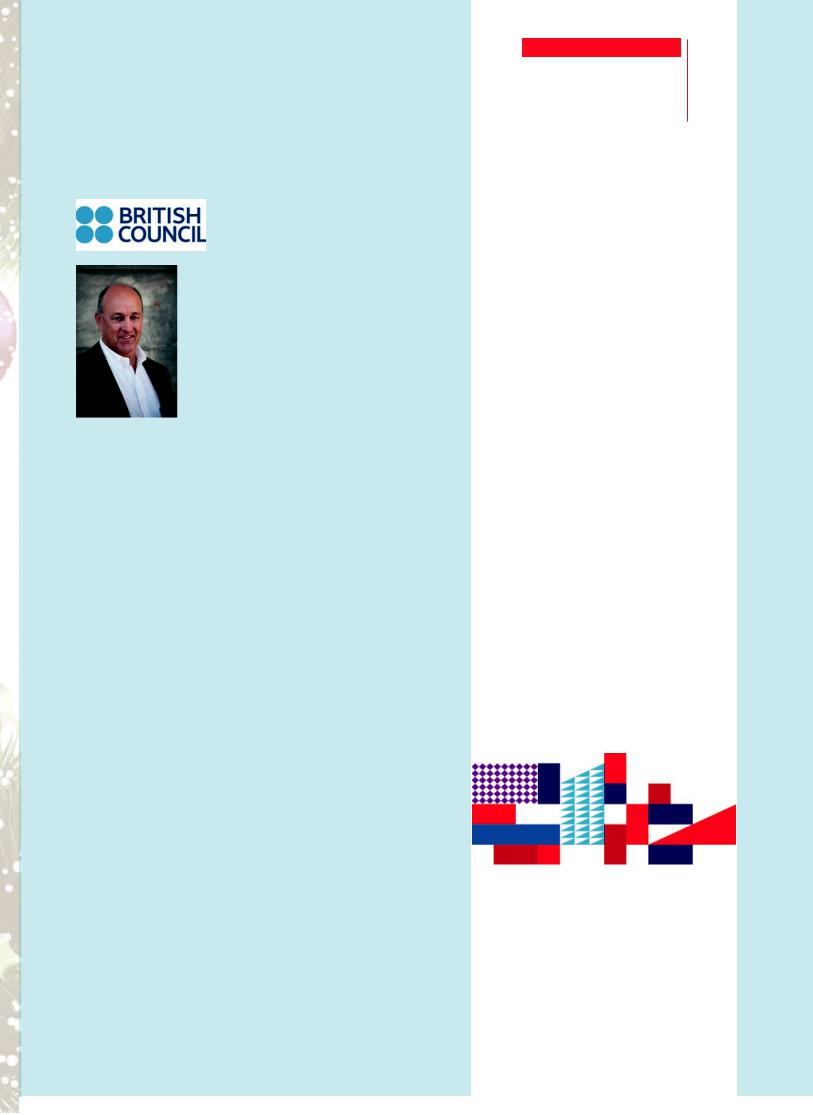
TOPICAL JOURNEY English
UK-RUSSIA YEAR  27
27
December 2014
OF CULTURE
INTERVIEW WITH PAUL DE QUINCEY
What were your expectations and mo-
tivations when the Year of Culture was only planned and before it was launched?
It’s not every year that we are able to celebrate a bi-lateral Year of Culture, so our expectations for 2014 were high. Lots of events were scheduled to take place - both in Russia and in the UK – and our hope was that these events, and, perhaps even
more importantly, the strong relationships that underpin them, would further our understanding of each other’s cultures, open up windows of appreciation and exemplify the fact that the cultural relationship between our two countries has been strong for hundreds of years, is strong at present, and will continue to be strong in future.
What did you enjoy the most during this year, and what new experiences did you have in 2014? What are the results of
the YoC?
While some of the high-level publicity for the Year as an intergovernmental initiative has been scaled down, the Year itself has been a great success. All of the events – except one or two – have taken place. And all of them have been of an exceptionally high standard. Notable was the Chekhov International Festival’s British Theatre Season which welcomed London’s Globe Theatre, the Scottish Ballet, the National Theatre of Scotland, Sadlers Wells and the fabulous Gecko Theatre Company. The London Philharmonic Orchestra performed Benjamin Britten’s “War Requiem”, we screened nine of Alfred Hitchcock’s silent films with live music to an audience of 15,000 and saw the Multi-media Art Museum of Moscow welcome hundreds of thousands of visitors to the James Bond exhibition. Writers’ visits, Professor David Cristal’s visit and presentations in Moscow and St.Petersburg, the biggest ever conference for English teachers (E-merging Forum), performances by young British rock bands, Linguistic Symposium and major UK Education Fairs in Moscow and St Petersburg have also taken place.
And more is still to come. The New British Film Festival opened 28th October with famous British actor and director, Ralph Fiennes screening his new film, The Invisible Woman; the Globe’s production of Shakespeare’s “Midsummer Night’s Dream” opened in Moscow 29th October and a major Francis Bacon exhibition will open at the Hermitage 6th December.
What are your thoughts in retrospect about the follow up
of the Year and the future of cultural relations between the
UK and Russia, any future plans based on the results of the year?
Watch this space – 2016 is the 400th anniversary of Shakespeare’s death and will be a year long celebration of his life and works.
Paul de Quincey, Director British Council Russia and Cultural Counsellor British Embassy
“Talking of relationships and step changes, things with Russia seem to have got a lot more positive over the past year or so and we are working with the government in a way we couldn’t have imagined working given the way things were a few years ago.
Yes, it’s a level of partnership that we have not had with Russian interlocutors for a very long time. I think the big change on that front has been the mutual desire to work together on the 2014 Russia–UK Year of Culture, and it has been a genuine partnership – everything from working together on the creation of the logo, to jointly working on the specifics of the programme. Of course it will always be a big, important, complex relationship with Russia so I don’t think we should pretend that these things are going to transform the whole UK–Russia relationship, but I do
think they make a critical contribution“ and we should be very pleased with the
work colleagues have done to pull this together.
Martin Davidson, CEO British Council
TOPICAL JOURNEY |
|
Exhibitions...................................... |
28 |
Music ............................................. |
30 |
Theatre and Cinema ........................ |
32 |
Education ....................................... |
34 |
Unrivalled Wedgwood ..................... |
36 |
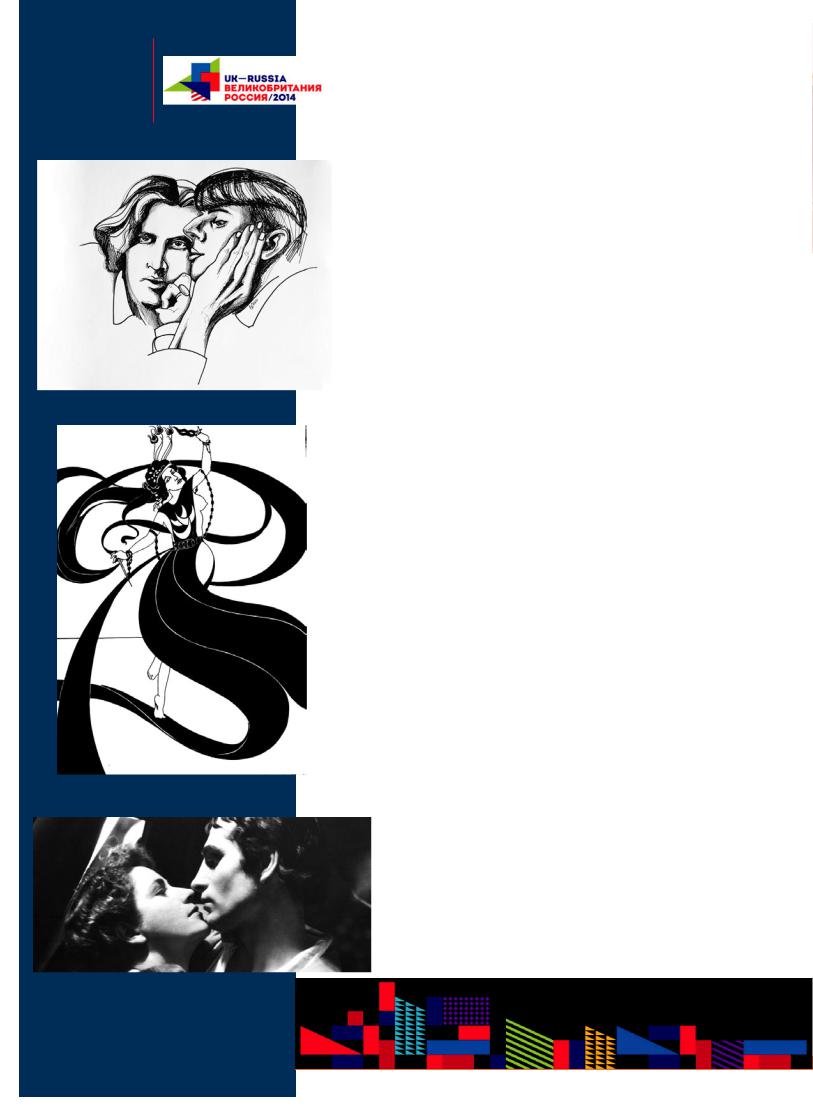
English |
TOPICAL JOURNEY |
28
December 2014
Image: Peggy Ashcroft and Laurence Olivier, Romeo and Juliet, New Theatre, J.W. Debenham, 1935 © Victoria and Albert Museum, London http://ukrussia2014. ru/en/event/julia-margaret-cameron-2/
Exhibitions
OSCAR WILDE. AUBREY BEARDSLEY. A RUSSIAN PERSPECTIVE
The “Oscar Wilde. Aubrey Beardsley. A Russian Perspective” exhibition was held in the Pushkin State Museum of Fine Arts from 23 September, 2014 to 1 December, 2014 as part of the UK–Russia Year of Culture 2014 celebrations. The exhibition embodied a unique blend of the two cultures at work. Over 150 art pieces were on display at the Pushkin State Museum of Fine Arts, including Aubrey Beardsley’s drawings and his series of prints for Oscar Wilde’s Salome. Among other exhibits the works by Russian Beardsley followers and admirers were also displayed, Russian and British art magazines with pieces by Beardsley, Wilde and their followers; as well as books by Oscar Wilde, autographed works, photographs and archive materials.
Oscar Wilde’s exquisite works gave a larger audience an opportunity to learn about the ideas of Aestheticism. Aubrey Beardsley’s intricate illustrations inspired the creators behind the first Russian art magazines. In Russia, as well as in Europe, Oscar Wilde was seen as a leading figure of the British Aesthetic movement. The artist’s unique personality charmed the public; his writing – plays, essays and famous paradoxes – had no less mesmerising an effect. Coined by Wilde and Beardsley, the image of a dandy turned into a signature for a number of artistic movements. They drew inspiration from the ‘art for art’s sake’ concept, the Silver Age of Russian Art being one of the greatest examples of its realisation.
In Russia, Wilde and Beardsley’s artistic aesthetics were a major influence on the formation of the style and concept of the Mir Iskusstva (World of Art) movement in St. Petersburg in the 1890s. However, the two artists reached their peak in popularity in Russia in Moscow in the 1900s. At the time, “Scorpion” and “Grif” publishing houses printed Oscar Wilde’s major works, along with the works of Russian decadent poets. “Scorpion” and the “Vesy” literary magazine played a greater role in the development of the Moscow Beardsley-inspired artistic community. Beardsley’s sophisticated arabesques influenced artists such as Konstantin Somov, Leon Bakst, Nikolay Feofilaktov, Miss (Anna Remizova-Vasilyeva), Sergei Lodygin, and Dmitriy Mitrokhin.
PHOTOGRAPH BY MARGARET CAMERON
Julia Margaret Cameron (1815–79) was one of the most important and innovative photographers of the 19th century. Drawn entirely from the V&A’s rich collection of Cameron photographs, the exhibition in the Multimedia Art Museum celebrated the bicentenary of her birth and marked 150 years since her first museum exhibition at the South Kensington Museum (now the Victo-
ria and Albert Museum) in 1865.
The exhibition included more than 250 photographs by Cameron – including 87 she sold and gave to the museum in 1865 – and five letters she wrote to Sir Henry Cole, museum’s founding director. In addition to producing evocative portraits of male and female subjects, Cameron staged tableaux and posed her sitters – friends, family and servants – in simulation of allegorical paintings.
Her photographs were not only beautiful but also rule-breaking: purposely out of focus, and often including scratches, smudges and other traces of the artist’s process.
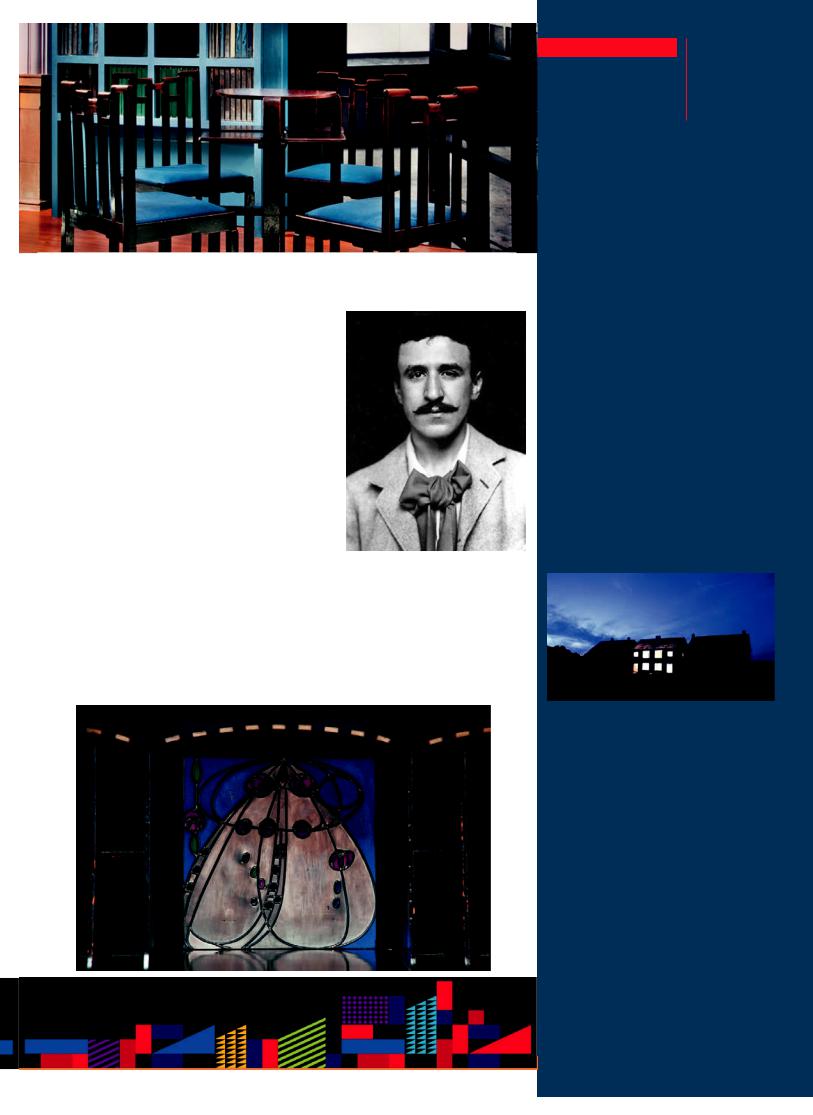
CHARLES RENNIE MACKINTOSH: MANIFESTO OF THE NEW STYLE
From September 5 to 9, 2014 One-Pillar Chamber of the Patriarch’s Palace of the Moscow Kremlin Museums presented to the Russian public the art of Charles Rennie Mackintosh (1868–1928), – an outstanding Scottish architect, painter and designer. A graduate of the Glasgow School of Art, Mackintosh became the most remarkable follower of modernist style in British architecture. His works had a serious impact on the development of European architecture and design in the 20th century.
Working on interiors decoration, Mackintosh tried to combine different arts, he created unique furniture, decoration items, stained-glass windows, textiles. He worked out a recognisable style, the hallmark of which is the famous
“mackintosh” chair. Не was among the first artists to use stencils for creating recurring decorative motifs in elegant interiors. Mackintosh is also wellknown as a gifted graphic artist, who made designs for posters, magazine covers, postcards and merchandise marks of Scottish firms.
Visitors could have an opportunity to see designs of interiors, the best examples of artistic furniture made for the most famous design projects of Mackintosh, lamps, stained glass, stencils, as well as watercolours and landscapes that show another aspect of talent of this brilliant Scottish artist.
TOPICAL JOURNEY English
29
December 2014
“SPACE OF NO EXCEPTION” EXHIBITION
The “Space of no Exception” exhibition in CCA
“Sokol” is the final stage of the biennial creative exchange cycle between students of the Institute of Contemporary Art, Moscow, and Goldsmiths College, London, both leading institutions in the
field of art education in Russia and the UK.
The starting point for the project was the idea of Jeff Wall, one of the greatest modern photographers. According to him, exhibition space should combine light and darkness, day and night, the “white cube” and the “black box”, i.e. it should consist of “solar and lunar sections”. The
“Space of no Exception” exhibition is an attempt to extend this idea, to create a reverse projection of the world of art in real life.
Combini ng mixed media works, which represent a subjective view of artists with different histories, the curator creates a space in which material and psychological worlds are not opposed to each other, they do not generate antagonism but co-exist, exposing the inevitability of interdependency and mutual influence.
The project represents the ideas of young generation of international artists on the possibility of transformation the world of rigid binary oppositions into the multifaceted world, where one sees the whole range of available solutions. After all, the adoption of “black” and “white” opens a new perspective on the space enclosed between them in all its entirety and diversity.
“MUSEON: NEW TECHNOLOGIES
AND TENDENCIES IN DEVELOPING MUSEUMS AND SIGHTSEEING IN
RUSSIAAND GREAT BRITAIN”
Forum “MuseON: New Technologies and Tendencies in developing museums and sightseeing in Russia and Great Britain” will be held in St. Peterburg and Moscow in March 3-6 in the context of official programme of the UK-Russia
Year of Culture 2014.
The Forum will become a ground for meetings of museum communities from Russia and Great
Britain, discussing topical issues of museum activities, and demonstrating the latest museum projects and technologies.
A programme of the MuseON Forum includes meetings with British experts, between British companies and Russian museums, and seminars.
The Forum will provide an opportunity of ongoing cultural and commercial dialogue between
Russian and British museums, organisations involved in the area of culture and businesses to expend opportunities of co-operation.
